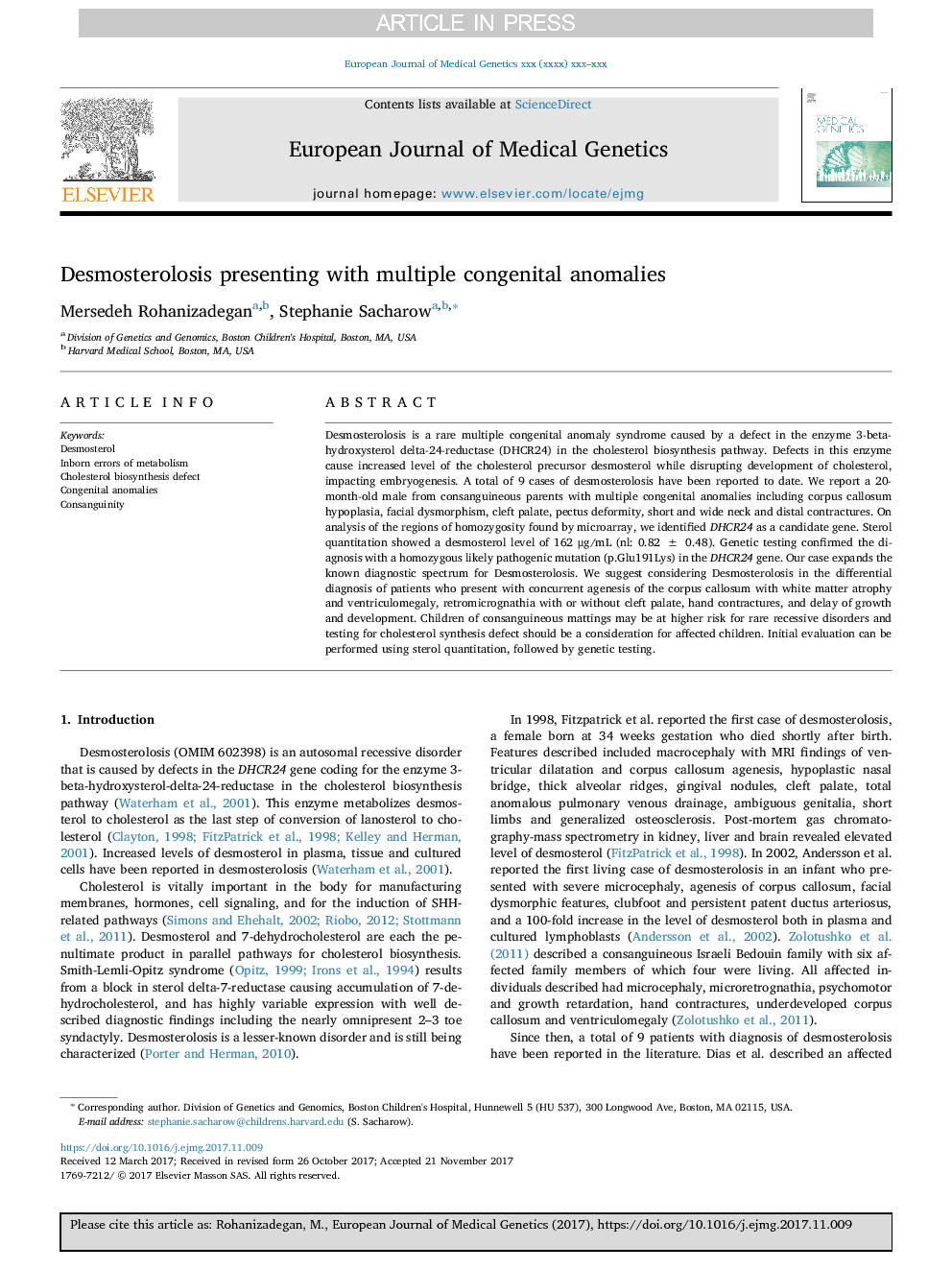ترجمه فارسی عنوان مقاله
دسمسترلوزیس با ناهنجاری های مادرزادی متعدد
عنوان انگلیسی
Desmosterolosis presenting with multiple congenital anomalies
| کد مقاله | سال انتشار | تعداد صفحات مقاله انگلیسی |
|---|---|---|
| 128840 | 2018 | 5 صفحه PDF |
منبع

Publisher : Elsevier - Science Direct (الزویر - ساینس دایرکت)
Journal : European Journal of Medical Genetics, Volume 61, Issue 3, March 2018, Pages 152-156
ترجمه کلمات کلیدی
دسمسترول، اشتباهات متفرقه متابولیسم، نقص بیوسنتز کلسترول، ناهنجاریهای مادرزادی، پیوند زناشویی،
کلمات کلیدی انگلیسی
Desmosterol; Inborn errors of metabolism; Cholesterol biosynthesis defect; Congenital anomalies; Consanguinity;

